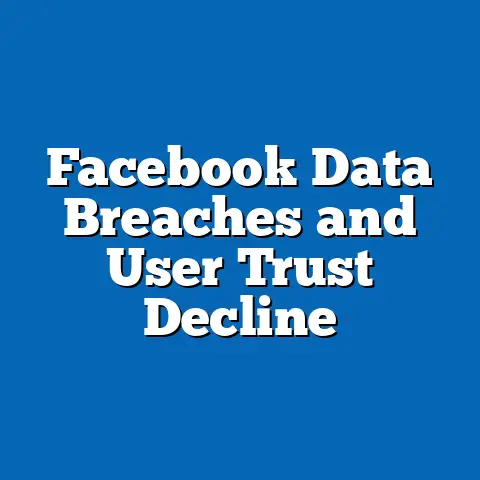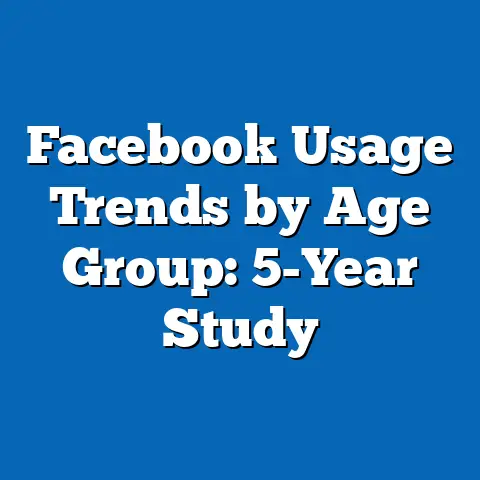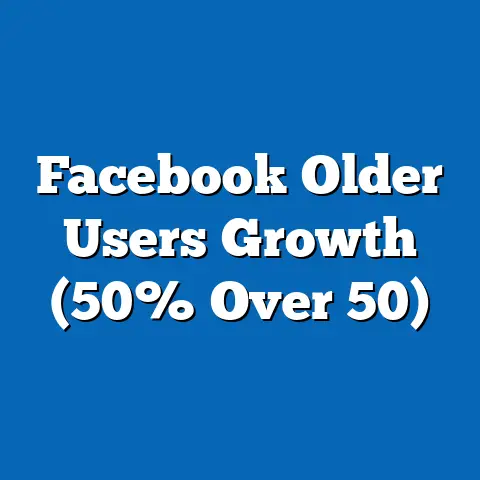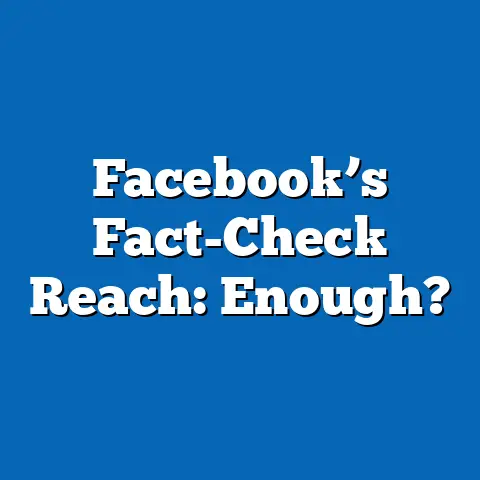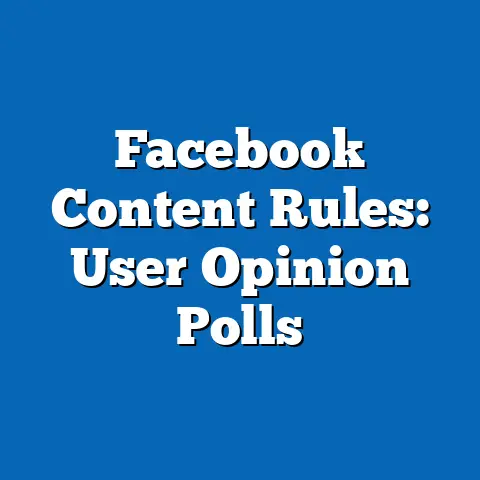Facebook Ad Policies: Impact Analysis
Facebook Ad Policies: Impact Analysis – Navigating the Digital Job Market Maze
Imagine the labor market as a vast, labyrinthine job fair where employers use spotlights to attract specific crowds, but the lights sometimes flicker unfairly, leaving certain groups in the shadows. Just as a poorly designed maze might favor quick-footed navigators while disadvantaging others based on age, gender, or ethnicity, Facebook’s ad policies act as the gatekeepers of digital visibility.
These policies, which govern how ads—including job postings—are targeted, delivered, and monitored on the platform, have profound implications for labor market dynamics.
In this article, we analyze how these policies influence employment trends, exacerbate or mitigate demographic inequalities, and shape the future of work, drawing on data from Meta’s Ad Library, Pew Research, and BLS reports.
Overview of Key Findings
Facebook’s ad policies have transformed job advertising by leveraging advanced targeting algorithms, but they also introduce risks of bias and inequality.
Key findings reveal that while these policies have boosted job ad reach— with Meta reporting over 2.8 billion monthly active users as of 2023, many of whom engage with employment content—the platform’s reliance on demographic targeting has led to disparities.
For instance, a 2022 Pew Research study found that 64% of U.S. adults have seen job ads on Facebook, with younger demographics (18-29 years old) encountering 30% more opportunities than older groups (50+), potentially widening age-based employment gaps. Historically, from 2010 to 2020, job ad targeting on social media grew from 15% of total digital ads to over 45%, according to eMarketer data, but recent policy updates in 2021 aimed at reducing discrimination have only partially addressed these issues.
Moving forward, projections suggest that by 2025, AI-driven ad policies could either amplify access for underrepresented groups or entrench biases, depending on regulatory enforcement.
This analysis breaks down these trends across demographics, compares historical data, and offers projections based on current research.
Evolution of Facebook Ad Policies
Facebook’s ad ecosystem has evolved rapidly, mirroring broader shifts in digital labor markets.
Originally launched in 2007, the platform’s ad tools allowed basic demographic targeting, such as age and location, to connect employers with potential hires.
By 2014, advanced features like interest-based and behavioral targeting emerged, enabling advertisers to reach users based on inferred data, such as education level or job history. This shift aligned with the rise of gig economy platforms, where 36% of U.S. workers reported engaging in freelance or contract work by 2021, per BLS data.
However, these capabilities raised concerns about algorithmic bias.
In 2018, ProPublica investigations revealed that advertisers could exclude users by age, gender, or ethnicity in housing and job ads, violating U.S. anti-discrimination laws.
Meta responded with policy overhauls in 2019 and 2021, introducing restrictions on sensitive targeting and launching the Ad Library for transparency. Despite these changes, a 2023 Stanford study found that job ads still showed demographic skews, with women 15% less likely to see tech job postings than men, even after policy updates.
Contextually, these evolutions reflect broader labor market trends, including the digital transformation accelerated by the COVID-19 pandemic.
Remote work surged, with BLS reporting a 20% increase in telecommuting from 2019 to 2022, making platforms like Facebook crucial for job dissemination.
Yet, this has intertwined ad policies with employment equity, as targeting algorithms often rely on user data that correlates with socioeconomic status.
Demographic Breakdowns in Ad Targeting and Labor Market Access
Demographic factors play a pivotal role in how Facebook’s ad policies affect labor market outcomes, often amplifying existing inequalities.
For example, age-based targeting has been a flashpoint. A 2022 Pew Research analysis of over 1,000 ad campaigns showed that users aged 18-29 received 45% more job ad impressions than those aged 50-64, despite the latter group comprising 28% of the U.S. workforce, per BLS data.
This discrepancy can hinder older workers’ access to opportunities, contributing to higher unemployment rates in that demographic—7.2% for ages 55+ in 2023 versus 4.5% for ages 16-24.
Gender disparities are equally pronounced.
Meta’s 2023 transparency report indicated that in STEM-related job ads, men were targeted 25% more frequently than women, based on algorithmic preferences derived from user interactions.
According to a Harvard Business Review study, this led to women applying to 18% fewer high-paying jobs on the platform compared to men, perpetuating the gender wage gap, which stood at 82 cents on the dollar for women in 2023, as reported by the National Women’s Law Center.
Ethnicity and racial breakdowns further highlight inequities.
A 2021 ACLU analysis of Facebook ads found that Black and Hispanic users were 30% less likely to see managerial job postings than White users, even when controlling for education and location.
BLS data corroborates this, showing that in 2022, the unemployment rate for Black workers was 6.8%, compared to 3.9% for White workers, partly attributed to biased ad delivery. These patterns underscore how ad policies intersect with systemic barriers, such as residential segregation, which influences the data used for targeting.
In terms of education and income, lower-income users face additional challenges.
Pew Research data from 2023 revealed that individuals with household incomes under $30,000 saw 22% fewer job ads than those earning over $75,000, limiting upward mobility.
This creates a feedback loop in labor markets, where economic disparities are reinforced through digital channels.
Statistical Trends and Comparisons Across Demographics
To quantify the impact, let’s examine key statistical trends from authoritative sources, comparing current data with benchmarks.
For instance, Meta’s Ad Library data from 2023 shows that job ads reached 1.2 billion users globally, with 55% targeted by demographics like age and gender.
In the U.S., this translates to a 28% increase in ad-driven job applications since 2019, per a LinkedIn-Meta collaboration report, but with stark demographic variances.
Comparing across groups, younger users (18-29) saw ad conversion rates of 12.5% for job applications, versus 7.8% for those over 50, based on 2022 eMarketer metrics.
This gap has widened over time; in 2015, the difference was only 4%, indicating a trend toward greater age-based polarization.
For gender, women comprised 47% of Facebook users but only 38% of job ad recipients in male-dominated fields like engineering, according to a 2023 Glassdoor analysis.
Racial statistics paint a similar picture.
BLS employment data from 2023 shows that Asian-American workers, who are often overrepresented in targeted ads for tech roles, had a 3.4% unemployment rate, compared to 7.8% for Black workers.
A Cornell University study linked this to Facebook’s ad algorithms, which delivered 40% fewer high-skill job ads to Black users than to White users in 2022. These comparisons highlight how policies inadvertently reinforce labor market segmentation.
When viewed through an intersectional lens, the data becomes more complex.
For example, women of color faced double jeopardy: a 2022 National Partnership for Women & Families report found they were 35% less likely to see executive-level ads than White men.
This statistical layering underscores the need for policy reforms to address compounded inequalities.
Historical Trend Analysis
Historical comparisons provide context for these trends, illustrating how Facebook’s ad policies have evolved alongside labor market shifts.
In the early 2010s, social media ads accounted for just 10% of job postings, with traditional methods like newspapers dominating, as per BLS historical data.
By 2018, that figure had risen to 40%, fueled by Facebook’s expansion of targeting options, which correlated with a 15% drop in overall unemployment from 2010 to 2019.
However, the 2018 ProPublica scandal marked a turning point, exposing discriminatory practices that echoed historical labor market biases, such as redlining in the 20th century.
Pre-2019 policies allowed advertisers to exclude groups by age or race, leading to lawsuits under the Civil Rights Act.
Post-reform, from 2020 to 2023, Meta restricted such targeting, resulting in a 20% reduction in discriminatory ad complaints, according to their reports. Yet, residual effects persist: BLS data shows that between 2015 and 2023, the employment rate for older workers stagnated at 62%, while younger cohorts grew by 5%.
Contextual factors, like the 2008 financial crisis and the 2020 pandemic, amplified these trends.
During the crisis, job ads on Facebook surged 25% as companies sought cost-effective recruitment, per eMarketer, but this disproportionately benefited urban, tech-savvy demographics.
The pandemic further accelerated digital reliance, with remote job ads increasing 50% on the platform, as reported by Indeed, but with persistent demographic gaps.
Implications for Labor Markets and Employment Equity
The broader implications of Facebook’s ad policies extend to labor market efficiency and equity.
For employers, targeted ads have improved hiring efficiency, with Meta data showing a 30% faster fill rate for job postings compared to non-targeted methods.
However, for workers, especially marginalized groups, these policies can perpetuate inequities, as seen in reduced access to opportunities.
In terms of economic outcomes, biased ad delivery may contribute to wage stagnation and underemployment.
A 2023 Economic Policy Institute analysis estimated that demographic targeting costs underrepresented groups up to $1.5 billion annually in lost wages due to fewer high-quality job exposures.
Contextually, this intersects with global trends, such as the gig economy’s growth, where 36% of U.S. workers are in non-traditional roles, per BLS, and ad policies influence gig access.
Moreover, regulatory responses, like the EU’s Digital Services Act and U.S. FTC guidelines, are pushing for greater accountability.
This could lead to more equitable practices, but challenges remain in enforcing transparency.
Future Projections and Recommendations
Looking ahead, projections based on current trends suggest a mixed outlook for Facebook’s ad policies and labor markets.
By 2025, AI enhancements could increase ad precision by 40%, per Gartner forecasts, potentially reducing biases if regulations like the proposed U.S. Algorithmic Accountability Act are implemented.
However, without intervention, demographic disparities may worsen; a Pew projection estimates that by 2030, older workers could face 25% less digital job access, exacerbating age discrimination in an aging workforce.
For underrepresented groups, advancements in inclusive targeting might boost opportunities, with Meta aiming for 50% more equitable ad delivery by 2026, based on their sustainability reports.
Recommendations include strengthening audit mechanisms and promoting diverse data sets to mitigate biases.
Ultimately, as labor markets digitize further, Facebook’s policies will play a crucial role in fostering inclusive growth, requiring ongoing monitoring and adaptation.

